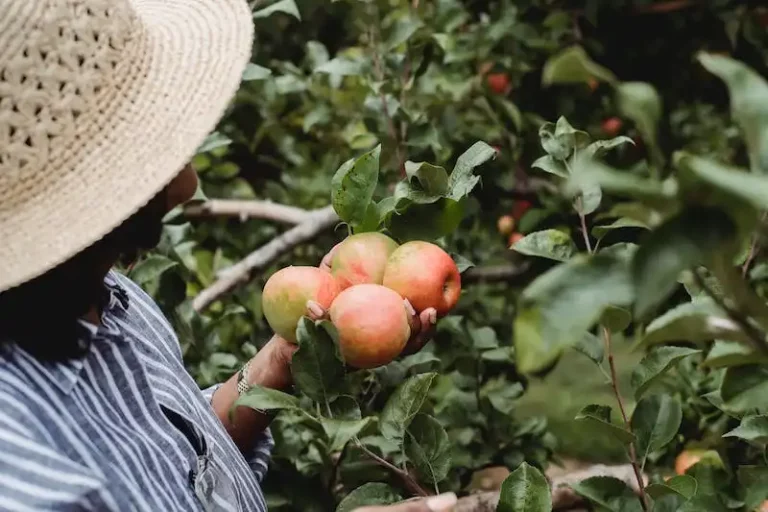Ginger, also known as Zingiber officinale, is a tropical plant native to Southeast Asia. It is widely used in cooking and is known for its unique flavor and various health benefits. While ginger can be found in grocery stores all year round, growing your own ginger at home allows you to enjoy it fresh and also saves you money in the long run.
Ginger plants prefer warm and tropical climates, but they can also be grown in cooler regions. If you live in a cooler climate, you can grow ginger indoors using a tray or a pot. To get started, leave a few pieces of ginger with eyes (sprouting buds) in a warm location for a week. This will help the ginger develop callus, which is important for sprouting.
Once your ginger pieces have sprouted, fill a tray or a pot with organic soil and place the ginger pieces on the surface, leaving the eyes exposed. Ginger plants need plenty of warmth and sunlight, so choose a sunny location for your plants. Water the ginger lightly and make sure the soil is always moist, but not soaked. Ginger plants also benefit from regular fertilization, so you can use an organic fertilizer every two to three weeks.
Ginger plants take about 8 to 10 months to mature. As the plants grow, you will notice beautiful foliage and aromatic flowers. While the foliage is the main source of ginger, you can also harvest the young shoots for a milder taste. To harvest ginger, gently dig down and lift the root. Leave some ginger at the base so that it can continue growing.
Ginger can be used in a variety of dishes to add flavor and create a homegrown, fresh flavor. You can grate ginger into your favorite recipes, steep it in hot water to make a healing ginger tea, or even make a ginger syrup to enjoy in your morning smoothie. The possibilities are endless!
So, if you want to grow ginger at home, start by sprouting ginger pieces in a warm and sunny location. Then, plant the sprouted ginger in a tray or a pot with organic soil and ensure regular watering and fertilization. Before you know it, you will have your own homegrown ginger, ready to be used in your favorite recipes!
Ginger
Ginger, scientifically known as Zingiber officinale, is a popular spice and medicinal herb that is native to the tropical regions of Asia. It has a hard, yellowish-brown root that is thick and knobby in appearance. Ginger grows up to two to four feet in height and has long, narrow green leaves. The plant thrives in warmer climates, where temperatures range from 70 to 90 degrees Fahrenheit.
Ginger is relatively easy to grow and can be planted in a garden or in containers. If you want to grow ginger from seed, you can simply obtain it from a reliable source. Another option is to start with a ginger root that can be purchased from the grocery store. Before planting, make sure the soil is well-drained, as ginger does not like to sit in waterlogged soil.
To plant ginger, choose a location that receives morning sun and partial shade in the afternoon. Dig a hole about two inches deep and place the ginger root with the buds facing upward. Cover it with soil and water it lightly, making sure not to overwater. Ginger plants prefer moist soil, but they don’t like to be completely waterlogged. Mulching around the plant can help retain moisture and keep weeds at bay.
As the ginger plant grows, it will produce foliage that can be harvested at any time. However, for the best flavor and highest nutrition, it is recommended to wait until the plants are about eight to ten months old before harvesting. To harvest ginger, simply dig it out of the ground or carefully lift it from the container. You can then wash it thoroughly and use a grater to create the desired amount of ginger for your recipes.
Ginger is not only a delicious and versatile spice, but it also has numerous health benefits. It has been used in traditional medicine for centuries to help with digestion, reduce inflammation, and boost the immune system. It is also rich in antioxidants, vitamins, and minerals that can support overall well-being.
Whether you choose to grow ginger in your garden or in containers indoors, it can be a rewarding experience. The tropical nature of ginger plants means that they can thrive in both outdoor and indoor environments. By following simple planting and care instructions, you can enjoy the zingiber flavor and many health benefits of homegrown ginger.
Site selection
When it comes to growing ginger, choosing the right location is crucial. Ginger grows best in an ideal environment that provides the right amount of sunlight, moisture, and soil conditions. Here are some important factors to consider when selecting a site:
- Sunlight: Ginger plants thrive in sunny locations that receive at least six to eight hours of direct sunlight daily. Choose a spot in your garden that is not shaded by trees or structures. The more sunlight the plant receives, the better it will grow.
- Soil conditions: Ginger prefers well-draining, loamy soil that is rich in organic matter. Avoid areas with heavy clay or compacted soil, as they can lead to poor drainage and root rot. If your soil is not ideal, you can improve it by adding compost or aged manure.
- Moisture: Ginger plants require consistent watering to keep the soil moist but not waterlogged. They do not tolerate drought or standing water. It is important to water the plants regularly, especially during dry spells.
- Temperature: Ginger is a tropical plant and cannot tolerate cold temperatures. It is best to grow ginger in a location where the temperature does not drop below 50 degrees Fahrenheit (10 degrees Celsius). If you live in a colder climate, consider growing ginger in containers so you can bring it indoors during colder months.
- Space: Ginger plants can grow quite large, reaching up to three to four feet in height. Make sure to provide enough space for the plants to spread out. If you are limited on space, you can grow ginger in a container, which helps contain its growth.
- Other considerations: While ginger is primarily grown for its edible rhizomes, it can also be grown as an ornamental plant. Its lush foliage and yellow cone-shaped flowers can add a tropical touch to your garden. Additionally, ginger has natural healing properties and is used by many people as a natural remedy. Some growers even chop and make a ginger syrup to enjoy.
By choosing the right site for your ginger plants, providing the ideal growing conditions, and following proper planting and care methods, you can enjoy a bountiful harvest of homegrown ginger in a few years.
Soil preparation
Before you start planting ginger, it’s important to prepare the soil properly. Ginger plants need loose, well-drained soil to grow and develop. Follow these steps to prepare the soil for planting:
- Choose the right site: Select a sunny spot in your garden that receives direct sunlight for at least 6-8 hours a day. Ginger prefers warm and moist conditions, so avoid planting in areas that have a cold or frosty climate.
- Clear the area: Remove any weeds, rocks, or debris from the planting site. It’s essential to have a clean area for the ginger plants to grow without any competition.
- Improve the soil: Ginger plants thrive in loose and fertile soil. Add organic matter like compost, well-rotted manure, or leaf mold to enrich the soil and improve its structure. This will provide the ginger plants with the necessary nutrients and moisture retention.
- Avoid waterlogging: Ensure proper drainage by incorporating sand or perlite into the soil. This helps prevent waterlogging, which can lead to root rot and other fungal diseases.
- Test the pH level: Ginger plants prefer slightly acidic to neutral soil with a pH level between 6.0 and 7.0. Test your soil’s pH level using a home testing kit and make any necessary adjustments. You can lower the pH level by adding sulfur or raise it by adding lime.
- Apply fertilizer: Ginger plants have high nutritional needs, so it’s important to provide them with a balanced fertilizer. Use a slow-release or organic fertilizer rich in nitrogen, phosphorus, and potassium. Apply the fertilizer according to the manufacturer’s instructions.
- Prepare the planting area: Create mounds or raised beds to improve drainage and prevent water stagnation. Space the mounds or beds about 12-24 inches apart to allow enough room for the ginger plants to grow.
- Plant the ginger: Place the ginger root rhizome with the eye buds facing up and cover it with 1-2 inches of soil. If you are using containers, make sure they have enough drainage holes to prevent water accumulation.
- Mulch the soil: Spread a layer of mulch, such as straw, chopped leaves, or borage, over the planting area. Mulch helps retain moisture, suppresses weed growth, and maintains a more even soil temperature.
Fallow these steps to properly prepare your soil for ginger planting. Taking the time to create the ideal growing conditions will help ensure a healthy harvest of fresh ginger with a rich flavor and zingiber. Happy gardening!
Planting
When it comes to growing ginger, the right planting conditions are crucial for a successful harvest. Ginger plants grow best in warm and humid climates, so if you live in an area with frost, it’s better to choose a different plant to grow.
Before planting ginger, choose a spot in your garden that receives morning sun and has well-drained soil. Ginger thrives in rich soil, so it’s important to prepare the soil by adding organic matter such as compost or fertilizer.
To plant ginger, start by selecting a fresh ginger root from your local grocery store or health food store. Look for a root with thick and plump fingers.
Follow these steps to plant ginger:
- Choose a piece of ginger with well-developed “eyes” or small buds.
- Fill a wide, shallow container with well-draining soil and moisten it with water.
- Place the ginger root on the soil surface, with the eyes facing up.
- Cover the ginger root with about 1-2 inches of soil.
- Water the soil lightly to keep it moist, but not waterlogged.
- Keep the container in a warm and sunny location, such as a greenhouse or near a south-facing window.
Ginger plants take about 2-3 weeks to sprout, so be patient. Once the foliage starts to grow, continue to water the plant regularly, keeping the soil moist.
As the ginger plant reaches maturity, you can start harvesting the roots. Simply dig around the base of the plant and gently lift the roots out of the soil. You can harvest ginger when the foliage starts to turn yellow.
Before harvesting, you can also chop off the top foliage and use it as a natural fertilizer for other plants. Many gardeners also choose to add comfrey leaves or other organic materials to enrich the soil.
Ginger plants require regular fertilizing to ensure healthy growth. You can feed your ginger plant with a balanced fertilizer every few weeks to promote root and foliage development.
Whether you’re using ginger for cooking, brewing tea, or serving it as a flavoring in recipes, growing ginger at home can be a rewarding experience. With the right planting conditions and care, you’ll have a bountiful supply of fresh ginger to enjoy!




